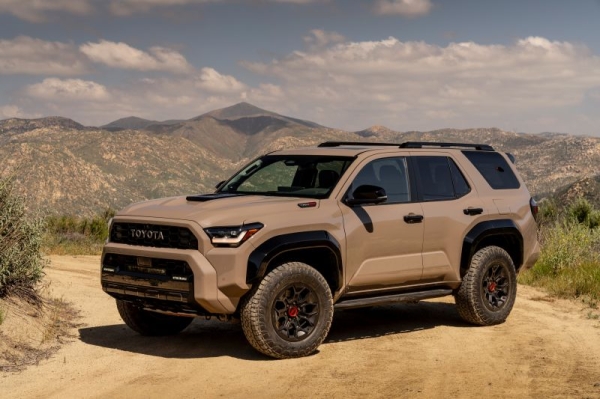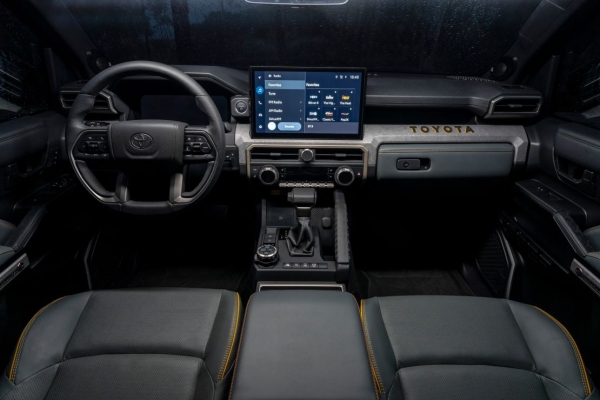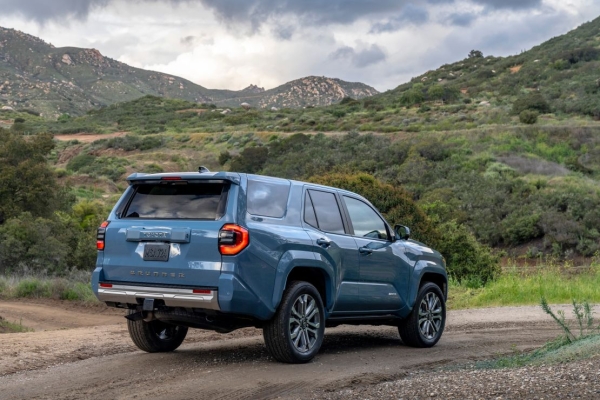
It’s been almost 15 years since there has been any major change to the popular Toyota 4Runner SUV, a fan favorite among off-road enthusiasts. But an all-new version is finally coming, and among the most notable changes is the addition of a hybrid option.
The 4Runner shares a lot of its engineering, and a lot of history, with Toyota pickups. The very first 4Runner, introduced about 40 years ago, was essentially a modified four-wheel-drive Toyota pickup, and, in this new generation the two models are again closely related.
The new 2025 Toyota 4Runner, like the Tacoma, will be available with Toyota’s iForce Max hybrid system, adding another popular model to Toyota’s broadening hybrid line-up. It comes as more consumers, who may be wary of buying fully electric vehicles, are increasingly turning to hybrids.
Since the beginning of 2023, hybrids have risen from about 6% of all new vehicles sold, a little less than electric vehicles at that time, to nearly 9% now, according to data from Edmnds.com. EV market share, meanwhile, is about the same as it was then.
The hybrid system in the 4Runner adds a 48 horsepower electric motor to a turbocharged 4-cylinder engine to produce up to 326 horsepower in total. This version will be the most powerful 4Runner offered yet, although cheaper, less powerful gas-only versions will also be available.
Toyota’s hybrid compromise
Adding a hybrid option to the 4Runner is part of Toyota’s broad strategy to “electrify” nearly every model in the automaker’s line-up while, for now, offering few fully electric vehicles. (Toyota currently sells only one electric model, the BZ4X, and one Lexus luxury EV in the US.) Toyota executives have long said that hybrid vehicles – which use an electric motor to assist a gas engine in driving a vehicle – offer broad benefits in greenhouse gas reductions, with less cost and inconvenience for consumers than fully electric vehicles.

The Toyota 4Runner’s interior features the brand name in chunky block letters. Toyota
Critics, however, complain that Toyota’s insistence on offering hybrids instead of more electric vehicles – and its lobbying against government EV requirements – are holding back the auto industry’s EV transition. Consumers have responded positively, though, and Toyota’s hybrids have become extremely popular even as growth in sales of electric vehicles has slowed.
Besides the Tacoma, which is also popular with off-road enthusiasts, the 4Runner will join a new retro-styled Land Cruiser in a trio of off-road-focused 4-cylinder hybrid models. The Land Cruiser will come only as a hybrid while, both the 4Runner and Tacoma will have hybrid power as an option. Toyota also now sells the larger, more powerful, Tundra pickup in an iForce Max hybrid version, but with a bigger six-cylinder gas engine.
Hybrids can provide greatly increased fuel economy because they allow the gas engine to be shut off when the vehicle is stopped, or when only a little power is needed. Energy to run the electric motor is taken from the gas engine at times, and also during braking.

The 2025 Toyota 4Runner will also be available in a more luxurious Limited trim. Toyota
Besides fuel economy, a hybrid’s electric motor can also provide benefits in off-road driving because of its ability to produce additional power, as in the 4Runner. Jeep has had a huge sales success with its Wrangler 4Xe, a plug-in hybrid with batteries that can be charged using an electric vehicle charger as well as from the SUV’s own gas engine.
A smoother riding 4Runner
New engineering will provide a smoother on-road ride than the current rather stiff-riding 4Runner model, Toyota promises. The new 4Runner retains some functional features that are particularly important such as the roll-down back window, which allows long items to hang out the back. Side windows in the back wrap up over the roof, slightly, a design cue taken from the first generation of 4Runners in the 1980s.
The 2025 4Runner will be available in a new off-road-tuned Trailhunter version as well as more luxurious Limited and Platinum versions. There will a number less well-equipped and cheaper versions, as well, of course.
Some less expensive 4Runner models will be available with rear-wheel-drive only, while others will have a part-time four-wheel-drive system, designed to be turned off when driving on dry pavement. Others will have a permanent four-wheel-drive system.
Toyota has not yet provided pricing or fuel economy information for the new 4Runner. Prices for the current of the 4Runner start at around $41,000.

